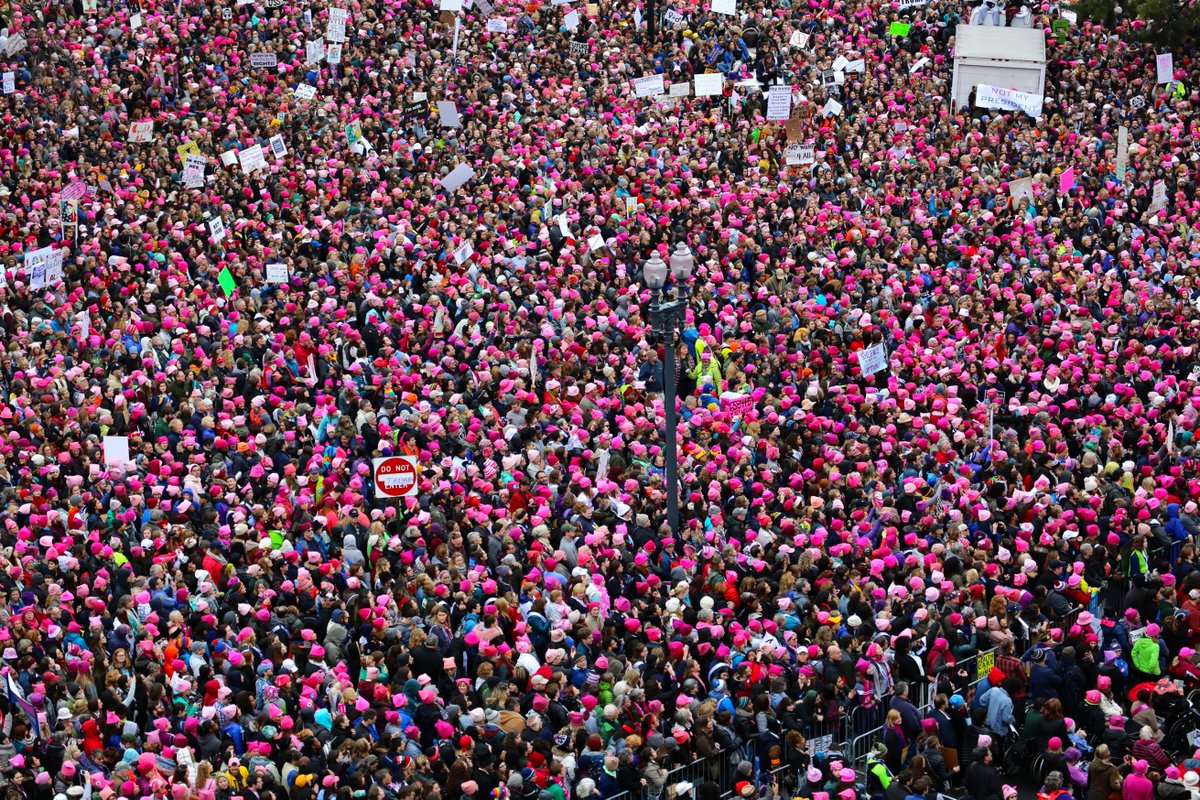By Katherine Coble || News Editor
On Friday, January 20, 2017, Donald J. Trump was officially sworn in as President of the United States during the inauguration ceremony in Washington, D.C. The very next morning, around half a million people descended on the nation’s capital for the Women’s March on Washington. Roughly 3.3 million people marched worldwide in solidarity, according to The Atlantic. The juxtaposition between these two wildly different events is not lost on Franklin & Marshall first-year Megan Kling, who made the unusual choice to attend both Trump’s inauguration and the Women’s March purposefully organized to follow it.
Kling arrived in Washington D.C. two days before the March with the intention participating in it alongside some friends attending American University. They decided to also go to the presidential inauguration on Friday afternoon because it is free and open to the public (aside from a select number of ticketed seats.) Trump’s inauguration was a historic, important moment, marking another successful transition of power and serving as a testament to the democracy of the United States.
“We just wanted to experience it,” Kling says, “Even though we wanted to go to the Women’s March more.” After going to both, Kling was struck by the drastic differences between the two events and their attendees. She says the crowd at Trump’s inauguration was primarily white men and describes it as being “a very aggressive and hostile environment.” Many of the viewers around her shouted crude remarks as the Obamas exited the Capitol building.
Kling found the Women’s March to be more “supportive,” although she did noticed two similarities between the events.
“All the Trump supporters were wearing their red ‘Make America Great Again’ hats, and then a lot of the people at the Women’s March were wearing their pink hats, so both crowds looked very uniform. And both of the crowds shouted their chants all day, even though what they were chanting was totally different.” Both crowds felt unified within their individual groups, though there was little to no crossover between the crowds themselves.
Kling was not the only F&M student to trek to Washington, D.C. for the weekend. The Black Student Union provided charter buses for students at Franklin & Marshall College wishing to attend the Women’s March. They paid for more than two dozen students to attend as part of their group, although countless other students attended on their own. BSU president and Rouse Scholar Jael Lewis says she attended the march not only to protest against Trump and his administration, but also to highlight the importance of intersectional feminism and to use her voice.
“I wanted to be a part of a movement that was not only extremely successful and historic, but also targeted a lot of issues that I am passionate about—issues that can literally define life and death for myself and those I care about.” Lewis firmly insists that the Women’s March on Washington was not a petty reaction to an election result she disagreed with. Especially now that Trump is the leader of the free world, Lewis wants to ensure he is held accountable for introducing rhetoric which perpetuates misogyny, racism, and xenophobia.
Both Kling and Lewis view the Women’s March as a successful example of Americans using their first amendment rights. Lewis points out that such an event would not have been possible in other parts of the world, where opposition political views are routinely suppressed. The women feel more empowered after attending the Women’s March and more eager about political activism.
“I have never been someone who was super interested in politics,” Lewis admits, “I didn’t focus on political discourse. But this election I felt forced to pay attention. Now I want to [do that] more. I really think we all need to pay more attention.”
First-year Katherine Coble is the News Editor. Her email is kcoble@fandm.edu.
